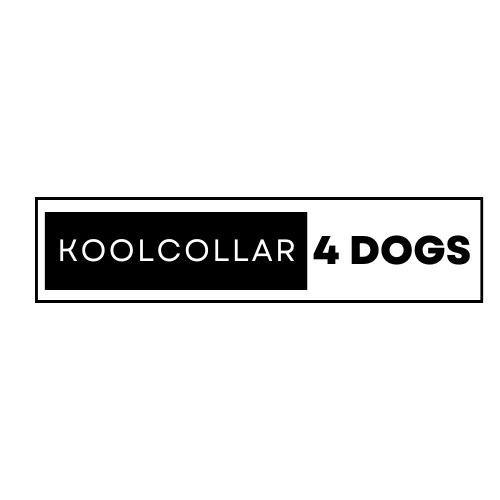The importance of a healthy puppy diet
As a devoted pet parent, ensuring your furry companion receives the proper nutrition from the outset is paramount. A well-balanced and wholesome puppy diet plays a pivotal role in your puppy’s overall growth, development, and long-term health. Providing the right nourishment during this critical stage sets the foundation for a robust immune system, strong bones, and a vibrant coat.
Puppies have distinct dietary requirements compared to adult dogs, as their bodies are rapidly growing and developing. A deficiency in essential nutrients can lead to various health issues. That includes stunted growth, weakened immune function, and even behavioral problems. On the other hand, a carefully curated puppy diet tailored to your puppy’s specific needs can foster optimal physical and mental well-being.
By investing time and effort into understanding your puppy’s nutritional requirements, you can make informed decisions that will positively impact their quality of life for years to come. This comprehensive guide will equip you with the knowledge and tools necessary to craft a healthy and nutritious puppy diet for your beloved furry companion.
Also Read Best Dog food for Lab Puppies
Understanding the nutritional needs of puppies
Puppies have unique nutritional needs that differ from those of adult dogs. During their first year of life, puppies undergo rapid growth and development. And requires a diet rich in specific nutrients to support these processes. Here are some key considerations when it comes to understanding and taking care of your puppy‘s nutritional requirements:
- Energy Requirements: Puppies have higher energy demands compared to adult dogs due to their accelerated growth rate. Puppy diet should provide an adequate amount of calories from high-quality sources to fuel their development.
- Protein: Protein is essential for building and repairing tissues, muscles, and organs. Puppies require a higher percentage of protein in their diet compared to adult dogs to support their growth and development.
- Fats: Fats are a concentrated source of energy and aid in the absorption of fat-soluble vitamins. Puppies need a moderate amount of healthy fats in their diet for proper growth and development.
- Calcium and Phosphorus: These minerals are crucial for the development of strong bones and teeth. Puppies require a balanced ratio of calcium and phosphorus to support their skeletal growth.
- Vitamins and Minerals: A variety of vitamins and minerals, such as vitamins A, D, E, B-complex, iron, zinc, and copper, are essential for various bodily functions, including immune system support, vision, and metabolism.
By understanding these key nutritional requirements, you can make informed choices when selecting the appropriate puppy diet for your growing pup.
Common mistakes to avoid when feeding your puppy
While striving to provide the best for your furry companion. It’s essential to be mindful of common pitfalls that can undermine your efforts. Avoiding these mistakes can help ensure your puppy receives the optimal nourishment they need for healthy growth and development:
- Overfeeding or Underfeeding: Puppies have specific caloric needs based on their age, breed, and activity level. Overfeeding can lead to obesity and related health issues, while underfeeding can stunt their growth and development.
- Feeding Table Scraps: While it might be tempting to share your meals with your puppy, table scraps can be high in salt, fat, and other ingredients that are harmful to their health. Stick to a balanced and nutritious puppy diet specifically formulated for puppies.
- Switching Diets Too Frequently: Abrupt changes in your puppy’s diet can cause digestive upset and disrupt their nutrient absorption. If you need to transition to a new puppy diet, do so gradually over a period of several days.
- Ignoring Breed-Specific Needs: Different breeds may have unique nutritional requirements based on their size, activity level, and genetic predispositions. Consult with your veterinarian or a reputable source to ensure you’re meeting your puppy’s breed-specific needs.
- Neglecting Hydration: Water is essential for proper digestion, nutrient absorption, and overall health. Ensure your puppy always has access to fresh, clean water.
By avoiding these common mistakes, you can provide your puppy with a consistent and well-balanced puppy diet that supports their growth and development.
Introducing a puppy to a raw diet
In recent years, the raw diet for dogs has gained significant popularity among pet owners seeking a more natural and species-appropriate approach to feeding their furry companions. The decision to transition your puppy to a raw puppy diet should be made in consultation with a veterinarian. It’s essential to understand the potential benefits and considerations involved.
A raw diet for puppies typically consists of raw muscle meat, organ meats, bones, and supplements to ensure a complete and balanced nutrient profile. Proponents of this feeding approach argue that it closely mimics the natural diet of a dog’s ancestral carnivore roots. And provides a more biologically appropriate source of nutrition.
One of the potential benefits of a raw diet for puppies is improved digestion and nutrient absorption. Raw meats and bones are often easier for puppies to digest compared to highly processed commercial kibble. Additionally, raw puppy diets are free from synthetic preservatives, artificial flavors, and other additives found in some commercial pet foods.
However, it’s crucial to recognize that raw diets require meticulous planning and preparation to ensure your puppy receives the appropriate balance of nutrients. Improper handling or sourcing of raw ingredients can also increase the risk of foodborne illnesses. And makes it essential to follow strict safety protocols.
If you’re considering transitioning your puppy to a raw diet. It’s highly recommended to consult with a veterinarian or a qualified animal nutritionist. They can provide guidance on the specific nutritional requirements for your puppy’s breed, age, and activity level. As well as advice on safely introducing and maintaining a raw puppy diet.
Benefits and considerations of a raw puppy diet
Exploring the potential benefits and considerations of a raw diet for your puppy is essential in making an informed decision about their nutritional needs. While a raw puppy diet may offer some advantages, it’s crucial to weigh these against potential risks and challenges:
Benefits:
- Improved Digestion: Raw meats and bones are often easier for puppies to digest compared to highly processed commercial kibble. It potentially leads to better nutrient absorption and fewer digestive issues.
- Natural and Minimally Processed: Raw diets are free from synthetic preservatives, artificial flavors, and other additives found in some commercial pet foods. Which provides a more natural source of nutrition.
- Potential for Improved Dental Health: The act of chewing on raw meaty bones can help scrape plaque and tartar from a puppy’s teeth. And promote better dental hygiene.
- Potential for Improved Skin and Coat Condition: Some proponents of raw puppy diets claim that high-quality proteins and fats can contribute to a healthier skin and coat in puppies.
Considerations:
- Nutritional Balancing: Ensuring a properly balanced raw diet for a growing puppy can be challenging. As it requires careful planning and monitoring to provide the correct ratios of proteins, fats, vitamins, and minerals.
- Potential for Foodborne Illnesses: Raw meats and bones can harbor harmful bacteria, such as Salmonella and E. coli, posing a risk of foodborne illnesses if not handled and prepared correctly.
- Time and Effort: Preparing a raw diet for your puppy can be time-consuming and labor-intensive, as it involves sourcing, portioning, and storing raw ingredients.
- Cost: Depending on the quality of ingredients and sources, a raw diet can be more expensive than commercial pet foods.
- Potential for Nutritional Deficiencies: If not properly formulated, a raw diet may lack essential vitamins, minerals, or other nutrients critical for a puppy’s growth and development.
It’s essential to carefully weigh the potential benefits and considerations of a raw diet for your puppy in consultation with your veterinarian or a qualified animal nutritionist. Their guidance can help you make an informed decision and ensure your puppy receives a balanced and safe diet.
Transitioning a puppy to a raw diet
If you’ve decided to transition your puppy to a raw diet, it’s crucial to approach the process gradually and with careful planning. Abrupt dietary changes can lead to digestive upset, nutrient imbalances, and other potential health issues. Here’s a step-by-step guide to help you make the transition smoothly:
- Consult with a Professional: Before making any significant dietary changes, consult with your veterinarian or a qualified animal nutritionist. They can provide guidance on the specific nutritional requirements for your puppy’s breed, age, and activity level, as well as advice on safely transitioning to a raw diet.
- Gradually Introduce Raw Foods: Start by mixing small amounts of raw food with your puppy’s current diet. Over the course of several weeks, gradually increase the proportion of raw food while decreasing the amount of their previous diet.
- Source High-Quality Ingredients: Ensure you source high-quality, human-grade raw ingredients from reputable suppliers. This includes muscle meats, organ meats, bones, and any necessary supplements.
- Prepare Safely: Follow strict food safety protocols when handling and preparing raw meats and bones. This includes proper sanitization, storage, and handling techniques to minimize the risk of foodborne illnesses.
- Monitor Your Puppy’s Reaction: Closely monitor your puppy’s stool, energy levels, and overall health during the transition period. If you notice any concerning changes, consult with your veterinarian immediately.
- Adjust as Needed: Be prepared to make adjustments to the raw diet based on your puppy’s individual needs and responses. This may involve tweaking the ratios of proteins, fats, or adding or removing specific supplements.
- Provide Consistent Nutrition: Once your puppy has successfully transitioned to a raw diet, ensure they receive a consistent and balanced meal plan to support their ongoing growth and development.
Remember, transitioning a puppy to a raw diet is a significant change that requires patience, diligence, and professional guidance. By taking a gradual and well-planned approach, you can minimize potential risks and ensure your puppy receives the necessary nutrients for optimal health and well-being.
Creating a balanced and nutritious puppy bland diet
While a raw diet may not be suitable for every puppy or pet owner, there are alternative options for providing a balanced and nutritious diet. One such option is a bland diet, which can be particularly beneficial for puppies with sensitive stomachs or digestive issues. Here’s a guide to creating a balanced and nutritious bland diet for your growing puppy:
- Lean Protein Sources: Lean proteins, such as boiled chicken or turkey breast, are easily digestible and provide essential amino acids for your puppy’s growth and development.
- Complex Carbohydrates: Incorporate complex carbohydrates like brown rice, oatmeal, or sweet potatoes, which provide energy and fiber for digestive health.
- Supplements: Consult with your veterinarian or a qualified animal nutritionist to determine if your puppy requires any additional supplements, such as omega-3 fatty acids, probiotics, or vitamins and minerals.
- Hydration: Ensure your puppy has access to fresh, clean water at all times to support proper digestion and overall health.
- Gradual Transition: If transitioning from a commercial diet to a bland diet, do so gradually over the course of several days to avoid digestive upset.
- Portion Control: Monitor your puppy’s caloric intake and adjust portions based on their age, breed, and activity level to maintain a healthy weight.
- Variety: While a bland diet is intended to be easy on the digestive system, you can introduce variety by rotating different lean protein sources and complex carbohydrates.
Creating a balanced and nutritious bland diet for your puppy requires careful planning and attention to their specific nutritional needs. By following these guidelines and consulting with professionals, you can ensure your furry companion receives the nourishment they need for optimal growth and development.
Essential nutrients for a puppy’s growth and development
Providing a well-balanced and nutrient-dense diet is crucial for your puppy’s growth and development. Each essential nutrient plays a vital role in supporting various bodily functions and processes during this critical stage of life. Here are some key nutrients to prioritize in your puppy’s diet:
- Protein: Protein is the building block for muscle, tissue, and organ development. High-quality sources of animal-based proteins, such as lean meats, eggs, and dairy, are essential for supporting your puppy’s growth and repair processes.
- Fats: Fats provide energy and aid in the absorption of fat-soluble vitamins like A, D, E, and K. Omega-3 and omega-6 fatty acids, found in sources like fish oil and plant-based oils, support healthy skin, coat, and brain development.
- Carbohydrates: Complex carbohydrates, such as whole grains, vegetables, and legumes, provide energy and fiber for digestive health. They also support the growth of beneficial gut bacteria.
- Calcium and Phosphorus: These minerals work together to build strong bones and teeth. Calcium is especially crucial during the rapid skeletal growth phase of puppyhood.
- Vitamins: Vitamins like A, B-complex, C, D, and E play essential roles in various bodily functions, including vision, immune system support, and metabolism.
- Minerals: Minerals like iron, zinc, and copper are necessary for proper growth, development, and overall health. They support functions like red blood cell production, immune function, and enzyme activity.
- Water: Adequate hydration is essential for proper digestion, nutrient absorption, and overall bodily function. Ensure your puppy has access to fresh, clean water at all times.
By incorporating a variety of nutrient-dense foods into your puppy’s diet, you can provide the building blocks necessary for their optimal growth and development. Consulting with a veterinarian or a qualified animal nutritionist can help ensure you’re meeting your puppy’s specific nutritional needs.
Feeding guidelines for puppies of different breeds and sizes
While all puppies have similar nutritional requirements, their specific needs can vary based on factors such as breed, size, and activity level. Understanding these differences is crucial to ensure your furry companion receives the appropriate nourishment for their unique needs. Here are some general feeding guidelines for puppies of different breeds and sizes:
- Small Breed Puppies: Smaller breeds, like Chihuahuas and Yorkshire Terriers, have higher metabolic rates and tend to burn calories faster. They may require more frequent meals and a diet higher in calories and protein to support their rapid growth and development.
- Medium Breed Puppies: Breeds like Beagles and Cocker Spaniels have moderate energy requirements. Their diet should provide a balanced combination of proteins, fats, and complex carbohydrates to support their growth and activity levels.
- Large and Giant Breed Puppies: Larger breeds, such as Great Danes and Saint Bernards, have slower growth rates and may require a diet with a carefully controlled calcium and phosphorus ratio to prevent skeletal issues. Their diet should also be lower in calories to prevent excessive weight gain.
- Active and Working Breed Puppies: Breeds like Border Collies and German Shepherds, which are bred for working or sporting activities, may require a higher caloric intake and a diet rich in proteins and fats to support their energy needs and muscle development.
- Specialized Diets: Some breeds may have specific dietary requirements due to genetic predispositions or health conditions. For example, puppies prone to joint issues may benefit from a diet with added glucosamine and chondroitin supplements.
It’s essential to consult with your veterinarian or a qualified animal nutritionist to determine the appropriate feeding guidelines for your puppy’s breed, size, and activity level. They can provide personalized recommendations and help you create a tailored diet plan that meets your furry companion’s unique needs.
Monitoring your puppy’s health on their diet
Implementing a well-balanced and nutritious diet is just the first step in ensuring your puppy’s optimal health and well-being. Regular monitoring and adjustments are crucial to ensure their diet is meeting their changing needs as they grow and develop. Here are some key factors to consider when monitoring your puppy’s health on their diet:
- Body Condition: Regularly assess your puppy’s body condition by observing their weight, muscle tone, and overall appearance. A healthy puppy should have a visible waistline and ribs that are easily felt but not protruding.
- Growth Rate: Monitor your puppy’s growth rate by regularly weighing them and tracking their measurements. Consult with your veterinarian to ensure they are growing at an appropriate rate for their breed and age.
- Stool Quality: Observe your puppy’s stool quality and consistency. Well-formed, firm stools are a good indication of a balanced diet and healthy digestion. Loose or irregular stools may signal dietary imbalances or digestive issues.
- Energy Levels: A well-nourished puppy should have ample energy for play and activity. Lethargy or excessive fatigue may indicate nutritional deficiencies or other underlying health concerns.
- Coat and Skin Condition: A shiny, healthy coat and supple skin can be signs of a balance



